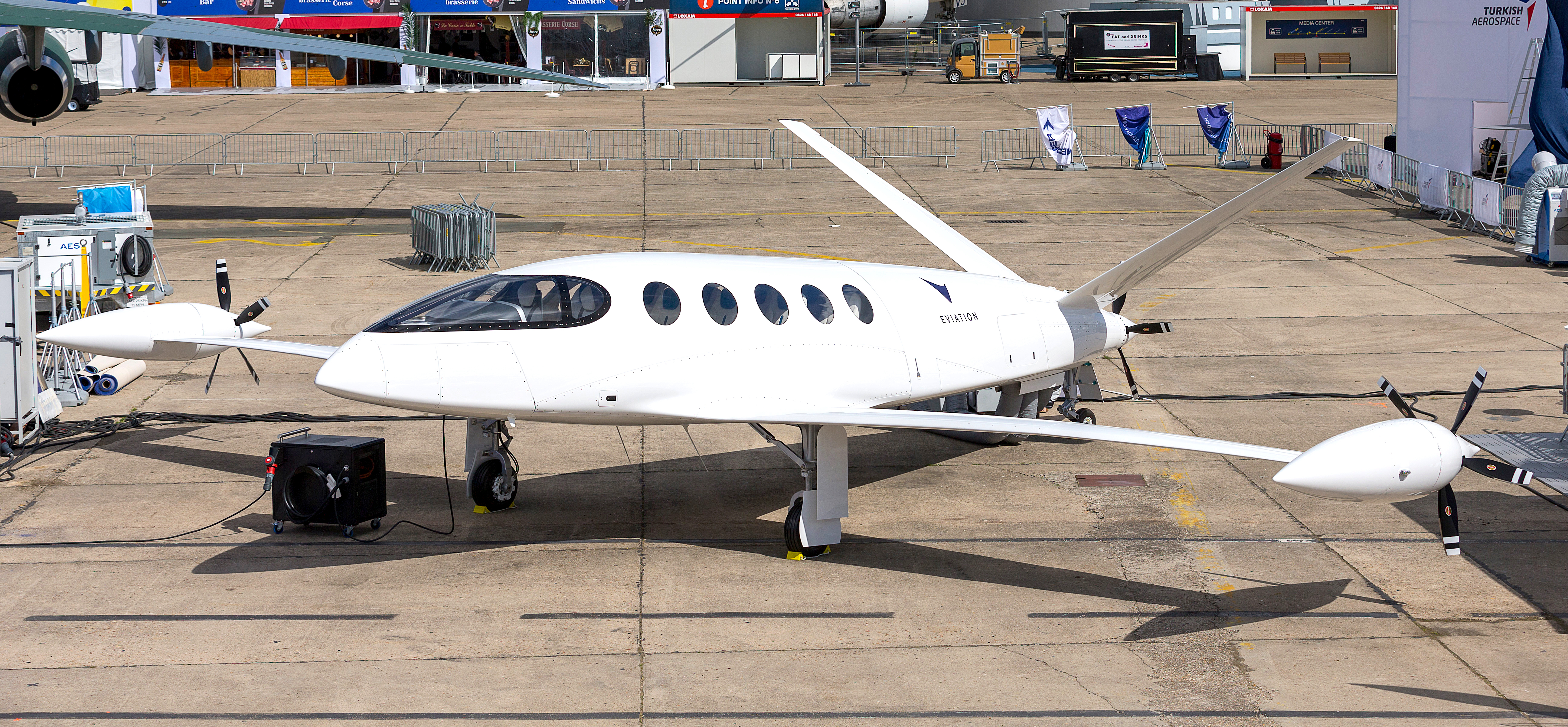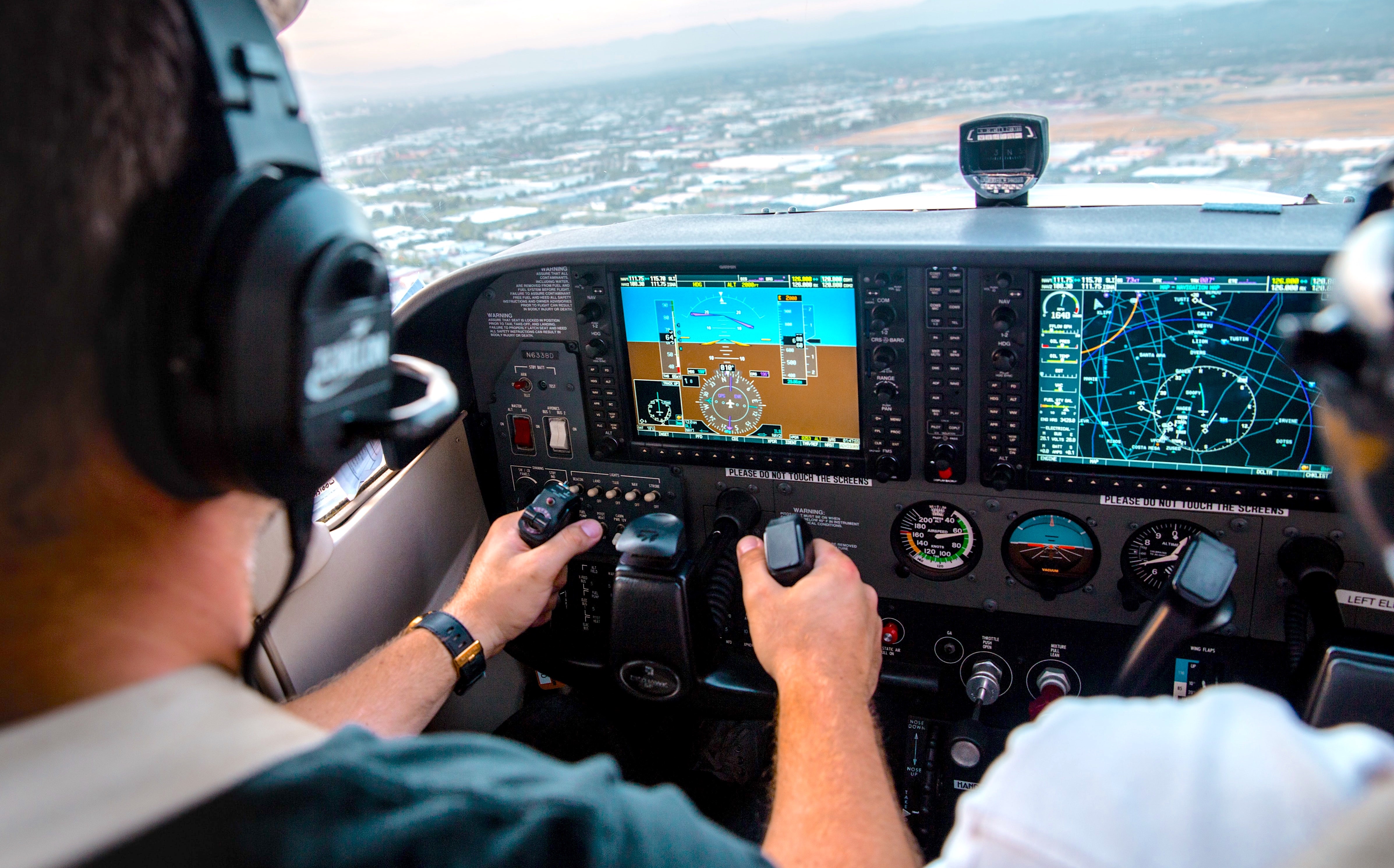Acquisitions: A Path to Growth for Aviation Businesses?

The aviation industry is at the forefront of its development. New changes are being implemented by all sectors of the aviation industry in order to combat the negative effects that have been a result of the pandemic and an inflationary state of the economy. While some leaders of the industry are seeing great prospects within new developments, some are still learning with traditional methods such as acquisitions and mergers within the aviation industry, especially with airlines and flight schools.
Key Takeaways
- Acquisitions have shown to improve operations: As a new future for the aviation industry is being forged, some leaders in the industry are looking to the past to improve their prospective future. Acquisitions have been a viable solution for challenges in the past, and there are many examples of how aviation businesses have consolidated operations and improved through acquisitions.
- Acquisitions being considered more: The pandemic has brought about a special subset of challenges to the aviation industry, and is being coupled with the current economic conditions. Acquisitions may be considered more often during this time as these problems persist.
- Acquisitions can benefit pilots, consumers, and shareholders: Acquisitions have shown to improve operations and increase efficiencies for aviation businesses, especially in terms of Return On Investments (ROI) and profitability. However, acquisitions of aviation businesses have also shown to have improvements for pilots, and consumers.
What is an acquisition?
An acquisition could be made and brought into the acquiring company. Or the acquisition could be made if the required company is left as a fully-owned standalone unit. Law Insider defines ‘Aircraft Acquisitions’ as ‘the acquisition (by lease or purchase), enhancement and/or modification of any aircraft, engine, propeller, appliance or spare part owned by Leasing or Air Cargo for use in the ordinary course of business of Leasing or Air Cargo’. Similarly how this definition fits into buying an individual aircraft, it also may involve one business acquiring another; an airline buying out a smaller one, or a flight school buying out another flight school to expand.
Another important operational definition of acquisition comes from Investopedia, they define an acquisition as when one company purchases most or all of another company’s shares to gain control of that company. Purchasing more than 50% of a target firm’s stock and other assets allows the acquirer to make decisions about the newly acquired assets without the approval of the company’s other shareholders. Acquisitions, which are very common in business, may occur with the target company’s approval, or in spite of its disapproval. With approval, there is often a no-shop clause during the process.
Differences Between Acquisitions and Mergers
Acquisitions and mergers have been a precedent within the aviation industry that has become more talked about within recent times, however, this is not something new within the aviation industry, especially for airline segments, more information about this topic can be found in our article ‘Airline Mergers: A Solution To The Pilot Shortage?’. While they both deal with two or more companies sharing or consolidating a business relationship, there are some distinct differences between acquisitions and mergers. Some of the main differences and comparisons are listed below
Acquisitions: In an acquisition, a new company does not emerge. Instead, the smaller company is often consumed and ceases to exist with its assets becoming part of the larger company. Acquisitions, sometimes called takeovers, generally carry a more negative connotation than mergers. As a result, acquiring companies may refer to an acquisition as a merger even though it’s clearly a takeover. An acquisition takes place when one company takes over all of the operational management decisions of another company. Acquisitions require large amounts of cash, but the buyer’s power is absolute. Companies may acquire another company to purchase their supplier and improve economies of scale–which lowers the costs per unit as production increases. Companies might look to improve their market share, reduce costs, and expand into new product lines. Companies engage in acquisitions to obtain the technologies of the target company, which can help save years of capital investment costs and research and development. Since mergers are so uncommon and takeovers are viewed in a negative light, the two terms have become increasingly blended and used in conjunction with one another. Contemporary corporate restructurings are usually referred to as mergers and acquisitions (M&A) transactions rather than simply a merger or acquisition. The practical differences between the two terms are slowly being eroded by the new definition of M&A deals.
Due to the negative connotation, many acquiring companies refer to an acquisition as a merger even when it is clearly not.
Mergers: A merger occurs when two separate entities combine forces to create a new, joint organization. Meanwhile, an acquisition refers to the takeover of one entity by another. Mergers and acquisitions may be completed to expand a company’s reach or gain market share in an attempt to create shareholder value. A merger occurs when two separate entities combine forces to create a new, joint organization. Legally speaking, a merger requires two companies to consolidate into a new entity with a new ownership and management structure (ostensibly with members of each firm). The more common distinction to differentiating a deal is whether the purchase is friendly (merger) or hostile (acquisition). Mergers require no cash to complete but dilute each company’s individual power.
In practice, friendly mergers of equals do not take place very frequently. It’s uncommon that two companies would benefit from combining forces with two different CEOs agreeing to give up some authority to realize those benefits. When this does happen, the stocks of both companies are surrendered, and new stocks are issued under the name of the new business identity. Typically, mergers are done to reduce operational costs, expand into new markets, boost revenue and profits. Mergers are usually voluntary and involve companies that are roughly the same size and scope.
Private Charter and Acquisitions
For the private charter segment, acquisitions typically deal with getting new aircraft or equipment. There has been the occasion that one private flight company may buy-out another in order to increase operations, however, individual pilots and those who fly for leisure purposes are typically seeking acquisition in terms of aircraft and assets. Some of the ways the private charter segments and acquisitions interplay, with some recent examples are mentioned below:
Vista Global Holding acquiring Jet Edge: Reuters shared that Privately-held Vista Global Holding said on Thursday it would acquire the private aviation services platform of U.S. charter operator Jet Edge, in the latest consolidation of the booming market for flying privately. The deal for an undisclosed amount is Dubai-based Vista’s seventh acquisition since 2018, as business jet services from hangars to aircraft access draw interest from private equity funds and larger industry players. Jet Edge has previously received financial backing from KKR & Co Inc (KKR.N). Private equity powerhouse KKR separately nabbed business aviation services network Atlantic Aviation for $4.5 billion in 2021.
Wheels Up purchased Delta Private Jets: In an article with Forbes, it is mentioned that over the past two years, Wheels Up purchased Delta Private Jets, Gama Aviation Signature, and TMC Jets, making it the second-largest operator of for-hire aircraft in the U.S. With a large consolidation of the market, Wheels up is able to leverage their services in the peak of demand, that is not showing an ease. With larger capabilities the company is better able to cater to their market and make astounding improvements to their operations.
Signature Aviation reaches deal with TAC Air’s U.S: said it reached a deal for privately-held TAC Air’s U.S. network of 16 fixed base operator (FBO) locations, which provide services for private planes, and a hangar. Signature, the world’s largest FBO network, was acquired last year by three private equity firms. Demand for flying privately to avoid commercial travel during COVID-19 has driven down the supply of pre owned business jets to historic lows, generating lengthy backlogs for luxury planemakers. That’s creating a shortage of available luxury aircraft, leading to cancellations and delays in private aviation, and driving companies like Signature Aviation to seek out access to jets.
The pandemic has brought about an increased demand for the private charter segments. There is even an analyzed shift in the preference for flying with private aircraft instead of using airlines. This topic is explored more in our article ‘Air Travel: A Shift From ’Public’ to Private?’. Whether you’re traveling for business or leisure, private jet charters provide you with an unparalleled travel experience. Some reasons are that private flights and the private charter segments are seeing a boost in demand because of convenience and flexibility, hassle-free travel, luxury and comfort, and for safety and security reasons. These reasons are tailed with the fact that business jets now account for about 25% of all U.S. fixed-wing aircraft flight activity, roughly doubling in share from before the pandemic, according to European data research and consulting company WINGX.
Flight Schools and Acquisitions
Flight schools have been at the helm of the recent pilot shortage that was accelerated with the pandemic. Fortunately, flight schools have been able to leverage challenging times in their favor as demand for pilot training has increased flight schools operations and the need to expand or increase such. More about this topic can be found in our article ‘The Pilot Shortage – A Challenge for Airlines, Possible Boom for Flight Schools.’. Some examples of recent flight school acquisitions and some analysis for such is mentioned below:
Renovus Capital Partners announced the acquisition of Phoenix East Aviation. Renovus: PEA shared that Renovus acquired a majority stake in the academy with the management team retaining a significant interest in the organization, Phoenix East Aviation, based in Daytona Beach, Florida. The flight school provides pilot training to domestic and international students. Using a modern fleet of 31 single and twin engine aircraft, the academy offers a variety of training programs from private pilot and flight instructor to airline transport pilot. Programs range in length from nine to 18 months and attract students from around the world. Leading countries of origin include the U.S., India, Norway and Brazil. The school is approved by the Federal Aviation Administration (FAA) and accredited by the Accrediting Council for Continuing Education and Training (ACCET). “The partnership with Renovus is a great combination of skill sets,” noted Spence Edwards, PEA’s President. “With their high-quality offering, PEA is well-positioned to capitalize on the growing global shortage of pilots,” concluded Brad Whitman, a Renovus founder. “By 2031, the world will need 460,000 new commercial airline pilots and meeting this demand will drive significant growth in the flight training sector.
FlightSafety International Acquires Frasca: In an article by AVweb, it was announced that Aviation simulator manufacturer Frasca International has been acquired by FlightSafety International, according to an announcement from Frasca on Thursday. The companies plan to offer a suite of complementary training devices for a wide array of markets “from universities and trade schools, to professional flight departments, commercial airlines, cargo operators and government and military flight operations.” Frasca and FlightSafety report a long history of collaboration beginning with the friendship of company founders Rudy Frasca and Al Ueltschi.
Textron Aviation gives us some insight in an article when they mention that the best flight training programs in the country combine knowledgeable, skilled instructors with state-of-the-art aircraft and equipment. Acquisitions offer distinct advantages, including greater dispatch reliability and lower operating costs – acquisitions prove to be a tool to grow for flight schools, especially for return on investment and profitability of these businesses. Some foundational reasons that flight school acquisitions may be a viable solution for some are because buying another flight school means a greater sense of reliability in the operations, lower operating costs, increased availability of parts and equipment, substantially helps as a recruiting tool, and being able to provide the latest and best technology.
Airlines and Acquisitions
Airlines are typically going to be the main subject when it comes to acquisitions or mergers within the aviation industry. Acquisitions within these segments of the aviation industry are no stranger to finding growth by combining or taking over operations, especially for smaller scaled airlines. While many reasons for acquisition are still the same, airlines have more distinct needs and their own purposes for acquisition. More about this topic can be found in our article ‘Airline Mergers: A Solution To The Pilot Shortage?’. Some examples of recent airline acquisitions and some insight for such is mentioned below:
JetBlue’s proposal to acquire Spirit Airlines: JetBlue has recently announced their desire to acquire Spirit Airlines. The company issued a press release disclosing a new offer. According to the statement, the proposal offers shareholders greater security, superior value, and the upfront payment of $1.50 per share of the cash consideration. Also in a recent email to customers, JetBlue’s CEO stated that this acquisition would bring greater access to onboard service, allegedly with the most legroom in coach, free high-speed wi-fi, free live TV and movies with every seat, and free high quality snacks + drinks. The CEO also promised more travel options across a larger, deeper network. Prior to this, the most recent merger to be announced was between Spirit and Frontier Airlines in early 2022. Now it would seem that JetBlue would like to acquire Spirit rather than let Frontier have it.
American Airlines and US Airways: US Airways was acquired by American Airlines in 2013, which led to the retirement of the US Airways brand. This transaction brought together two of the oldest airlines in the US, and created the world’s largest airline at the time. American Airlines is one of the oldest airlines in the US, It came together in 1930 from the collaboration of many smaller independent airlines. Acquisitions have been a significant part of the growth of the airline. In 1971, it acquired Trans Caribbean Airways. And in 1990, it bought rival Trans World Airlines’ (TWA) operations at London Heathrow, followed by the full airline in 2001. It also acquired several Latin American routes from Eastern Airlines, introducing Miami as a hub city. Like most airlines, American was struck by the terrorist attacks in September 2001. This worsened after the financial crisis in 2008, and the parent company of American Airlines, AMR Corporation, filed for bankruptcy protection in 2011. American Airlines considered several possible airline mergers or acquisitions as part of its restructuring plans, and decided to purchase US Airways.
Airline acquisitions have helped the industry achieve greater financial stability, which allows carriers to invest in improving their operations, and better serve their customers. Major airlines that acquire growth through acquisitions partly also do so to maintain profitability by improving management and better focusing resources, largely due to consolidation. Some foundational benefits of airline acquisitions are that low-cost carriers benefit from such, airlines operations improve, and business become more sustainable and efficient.
Overall Influence and Appeal of Acquisitions
Across all fields of the aviation industry. Acquisitions of operations within each respective segment has shown to give significant benefits for pilots, consumers, and shareholders. Acquisitions or mergers are nothing new in the aviation industry, however, due to recent times and the effects of such, there may be an increased desire for aviation businesses to acquire other businesses to consolidate operations and increase efficiency. Some of the key ways that acquisitions benefit all scopes of the aviation industry are mentioned below:
Acquisitions are a quick path to growth: It is observed that acqusitions are a viable option for a flight school, private charter business, or airline to grow their operations and their network. Having more equipment, personnel, flight paths, and capabilities for improvements are going to be utilized more during an inflationary economic climate. Growth through acquisitions is because acquisition multiplies economies of scale, acquisition can multiply revenues, and that acquisition multiplies assets.
Entering a foreign market: If a company wants to expand its operations to another country, buying an existing company in that country could be the easiest way to enter a foreign market. The purchased business will already have its own personnel, a brand name, and other intangible assets, which could help to ensure that the acquiring company will start off in a new market with a solid base.
To reduce excess capacity and decrease competition: If there is too much competition or supply, companies may look to acquisitions to reduce excess capacity, eliminate the competition, and focus on the most productive providers.
To gain new technology: Sometimes it can be more cost-efficient for a company to purchase another company that already has implemented a new technology successfully than to spend the time and money to develop the new technology itself. Having cutting-edge technological software and programs are going to be a key asset for any segment in the aviation industry, having the ability to consolidate efforts and improve efficiency are going to be important for flight schools, private charter segments, and airlines alike.
What this Means for the Future
While the trajectory of flight schools and the private charter segment are projected to increase and are in a position to leverage these factors, acquisitions may be a viable option for these businesses to achieve that further and faster. Airlines, while facing their own set of unique challenges, are also able to seek out acquisitions where they have proven to be a worthy solution for combating challenges through history.
As a new future is on the horizon for the aviation industry, all aspects of aviation businesses are going to be affected by the foreseeable future and the challenges associated with such. The pandemic has brought about a unique subset of challenges, that are coupled with the inflationary pressures from the global economy. It is necessary for big and small companies alike to look to the past in order to make a better future.
——————————————
Thank you for reading this week’s On Aviation™ full article. How do you think acquisitions in the aviation industry will influence future operations? Please share your thoughts in the comments below and remember to continue the conversation on our Twitter and Instagram.
Orlando – On Aviation™





